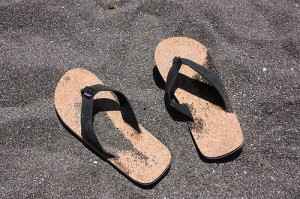 Summertime and the living is easy, fish are jumping, and the cotton is high . . . the long, lazy days of summer are almost here. Beach weather, watermelons, fruit-flavored sorbets, sand-between-your-toes, fireworks, barbecues, flip flops and bathing suits come to mind for most people when they think of summer.
Summertime and the living is easy, fish are jumping, and the cotton is high . . . the long, lazy days of summer are almost here. Beach weather, watermelons, fruit-flavored sorbets, sand-between-your-toes, fireworks, barbecues, flip flops and bathing suits come to mind for most people when they think of summer.
Remember when you were a kid and you would start planning all of the things you were going to do during the summer even before the bell signaling the end of the school year had rung? Now, as an adult, you have even more options! Here are 50 ideas for your summer bucket list, or your list of things to do this summer:
1. Put on your bathing suit and run through the sprinklers. Also, have a water balloon fight; cheat and pull out a water gun.
2. Load up on beach and sand toys:
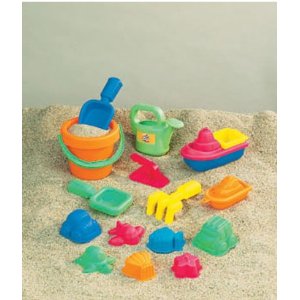
- Boats
- Dump trucks
- Shovels
- Rakes
- Buckets
- Sand molds in animal shapes
- An inflatable 6-color beach ball
- A beach tennis set
3. Build a sand castle. Get yourself some cheap castle making pieces, pick a spot where the sand is moist but not too wet, and get to work on your master piece. When it’s done, take a photo from a worm’s eye view.
Here’s an 8-part tutorial on monkeysee.com to help you out (it’s by a professional sand castle builder):
- How to Build a Sandcastle
- Creating the Sand Pile
- Creating the Towers of the Sand Castle
- Sandcastle – Creating the Crenelations and Cut-Through Arches
- Creating the Windows of the Sandcastle
- Creating the Crenelated Wall and Staircase
- Creating the Grand Entrance
- Making Your Sandcastle Last for an Eternity
4. Play beach volleyball.
5. Plant pint-sized cherry tomatoes in hanging baskets.

6. Make lemonade. Here’s an interesting, healthy recipe (which I got from here):
4 apples
1/4 lemon
First. Run the apples and lemon through your electric vegetable juicer.
Second. Add nothing, no water, no sugar!
Third. Sit back and enjoy your lemonade.
You can also try watermelon lemonade, which is a Gooseberry Patch recipe:
4 c. watermelon, chopped
1 c. sugar
1-1/2 c. lemon juice
6 c. cold water
Place watermelon in a blender; process until smooth and set aside. In a large pitcher, combine sugar and lemon juice; stir until sugar is dissolved. Stir in water. Add watermelon; mix well. Serve very cold; stir well before serving. Makes 8-10 servings.
 7. Make Hawaiian Punch. Here’s a great recipe that includes orange juice, guava juice, pineapple juice, grenadines, and Ginger Ale (you can add rum, I won’t tell).
7. Make Hawaiian Punch. Here’s a great recipe that includes orange juice, guava juice, pineapple juice, grenadines, and Ginger Ale (you can add rum, I won’t tell).
8. Make iced coffee. Here’s how to make it.
9. Make root beer floats. Just scoop some vanilla ice cream into a tall glass and pour your root beer over the vanilla ice cream, filling the glass as much as you can. Serve with a straw and a spoon.
10. Make homemade ice cream.
11. Go on a road trip.
12. Drink coconut water and eat coconut popsicles.
13. Decorate for the 4th of July with red, white, and blue decor: you can use pinwheels, balloons sprinkled with glitter, twinkle lights, star shaped confetti, sparklers, little flags, and so on.
14. Have a 4th of July barbecue.
15. Watch the fireworks on the 4th of July.

16. Pick an official “2013 Summer Song”; play it until you’re sick of it (or until your neighbors threaten to call the police).
Here’s an oldie but goodie (“Summer Breeze” by “Seals & Crofts”):
17. Do something fun and whimsical in your backyard, such as: adding a bird bath or bird feeder, including a garden statute or a sundial, or creating a fairy village.
18. Stop by the Farmer’s Market and your local U-Pick berry farm.
19. Start a wish tree. Here are the instructions:
- Choose a tree.
- Make a wish.
- Write it down on a piece of paper.
- Fold the piece of paper and tie it to the branch of the wish tree.
- Ask your friends to do the same.
- Continue writing down wishes until the branches are filled with wishes.
Wish Trees have been a part of many of Yoko Ono’s exhibitions. Here’s what she says about Wish Trees:
“As a child in Japan, I used to go to a temple and write out a wish on a piece of thin paper and tie it around the branch of a tree. Trees in temple courtyards were always filled with people’s wish knots, which looked like white flowers blossoming from afar.”
20. Catch fireflies late at night.
21. Go on a scavenger hunt. Better yet, go Geocaching.
22. Make a complete meal over a fire: include hot dogs, potatoes, and S’Mores.
23. Go to the beach and collect seashells. Use the seashells to decorate glass bottles.
25. Go fishing; eat what you catch.
26. Ride on a carousel or a Ferris wheel.
27. Go to a baseball game. Or, better yet, organize a baseball game with your friends.
28. Play flashlight tag.
29. Get a butterfly kit and catch butterflies, or watch caterpillars turn into butterflies. Go ahead and do both!
30. Go on a boat ride. This includes canoes, rowboats and paddle boats.
31. Create a terrarium.
32. Give your brain a break: sit in the shade under a tree and read something by Philippa Gregory, the Harry Potter series, the Twilight Saga, or the Lord of the Rings.
33. Make wind chimes.
34. Play miniature golf.
35. Go to at least one outdoor concert or theater performance.
36. Spend one whole day barefoot.
“Summer afternoon – summer afternoon; to me those have always been the two most beautiful words in the English language.” ~ Henry James
37. Choose a summer cocktail to help you escape the summer heat.
 38. Make tie-dye shirts.
38. Make tie-dye shirts.
39. Take a nap on a hammock.
40. Lie on the grass watching the clouds float across the sky, without a care in the world.
41. Go on a picnic. If you can find a music festival and have your picnic there, that’s even better. Pack your fried chicken, pasta salad, fruit, bottled water, and whatever else you’re going to have for your picnic and get going. Don’t forget your frisbee and something to play music with.
42. Fly a kite.
43. Visit a lighthouse.
44. Run a 10K for a good cause.
45. Set up a tent in the backyard and spend the night. Tell ghost stories.
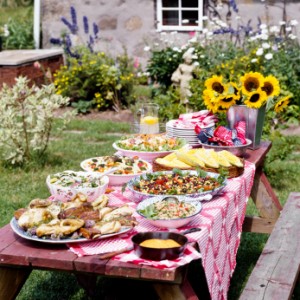
46. Come up with a list of delicious summer recipes you’re going to put together this summer. Here are two options:
Here are two recipe books to help you come up with more ideas:
47. Get a puzzle with 1000 pieces and put it together throughout the summer. It can depict the image of a summer table, birds, summer in the country, or a lake dotted with sailboats.
48. Surround yourself with the smells of summer: you can get the Yankee Candle Midsummer’s Night , or make a potpourri of summer herbs and flowers
49. Go on a nature hike.
50. Spend the day exploring an arboretum, Japanese Garden, botanical garden, or a nearby park.
Bonus: Have a pool party or a Luau!
“Deep summer is when laziness finds respectability.” – Sam Keen
Get 500 Summer Bucket List Ideas
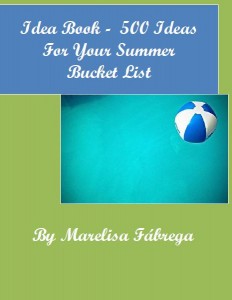 “Idea Book – 500 Ideas For Your Bucket List” has ideas to cover every aspect of your summer. Inside you’ll find the following:
“Idea Book – 500 Ideas For Your Bucket List” has ideas to cover every aspect of your summer. Inside you’ll find the following:
- 500 Ideas for Your Summer Bucket List
- Divided Into 8 Main Categories
- Further Divided Into 38 Subcategories
- 159 Page PDF
- 500 Images – One For Every Idea
- Practical Descriptions For Each Idea
- Over 25,000 Words
- 375 Links to Videos and Helpful Websites
Here’s a sample page:

“Idea Book – 500 Ideas for Your Summer Bucket List” is a digital product, which means you’ll receive a download link immediately upon purchase (nothing will be shipped to you). It costs only $9.95. Buy it now!

Related Posts:
1. Six Videos to Inspire Your Bucket List
2. 67 Ideas for Your “Just Because” Bucket List
3. Adventure Quotes: 50 Quotes on Living a Life of Adventure
4. Reverse Bucket List: 50 Things I’ve Already Done
Did you enjoy this article? Subscribe to “Daring to Live Fully” by RSS or by email, and get free updates.






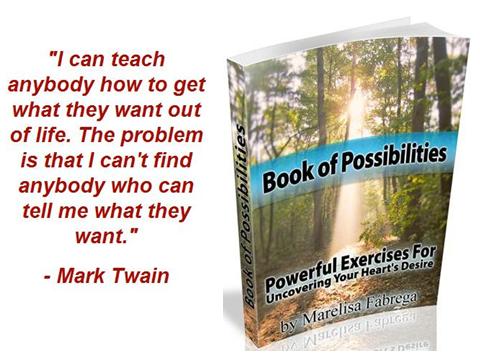
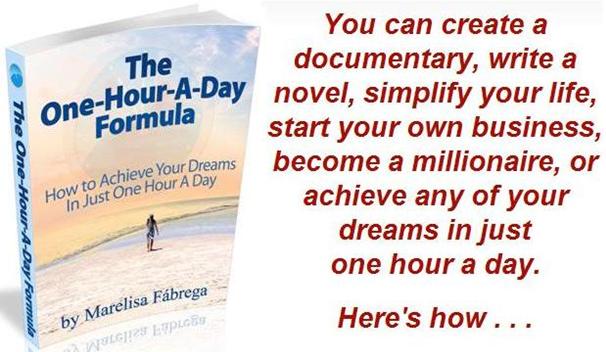
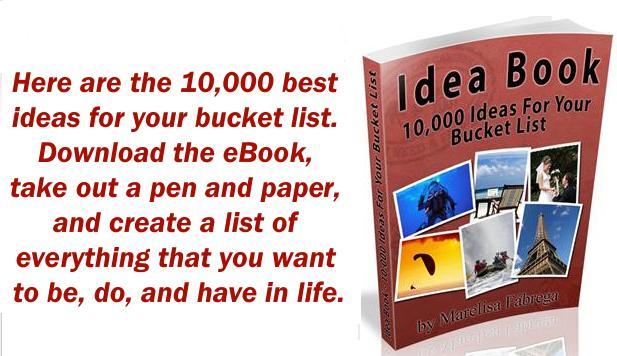
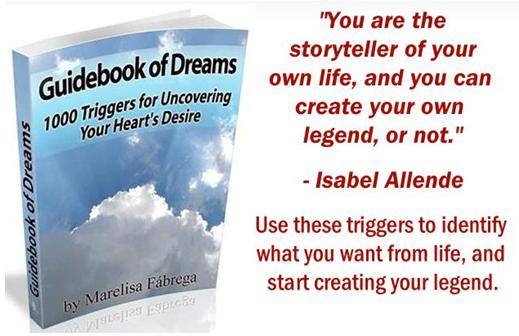
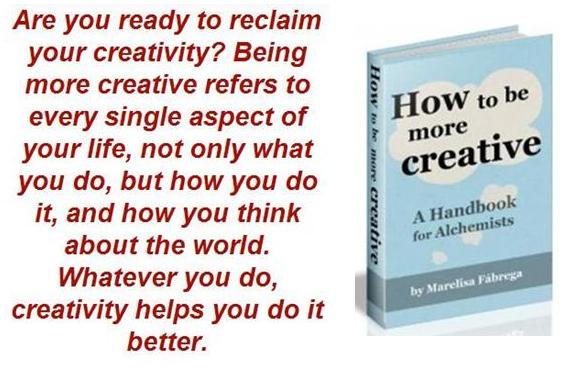
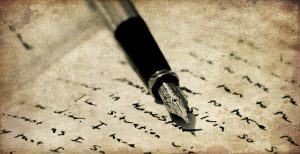

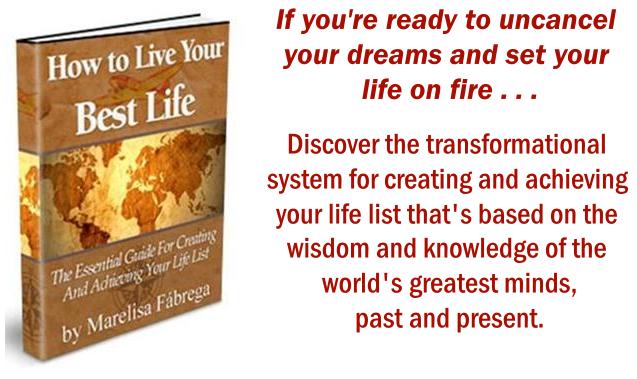





 Marelisa Fabrega is a lawyer and entrepreneur. She holds a Bachelor of Science in Business Administration from Georgetown University in Washington, D.C., as well as a Juris Doctor from the Georgetown University Law Center. You can learn more about her
Marelisa Fabrega is a lawyer and entrepreneur. She holds a Bachelor of Science in Business Administration from Georgetown University in Washington, D.C., as well as a Juris Doctor from the Georgetown University Law Center. You can learn more about her 





